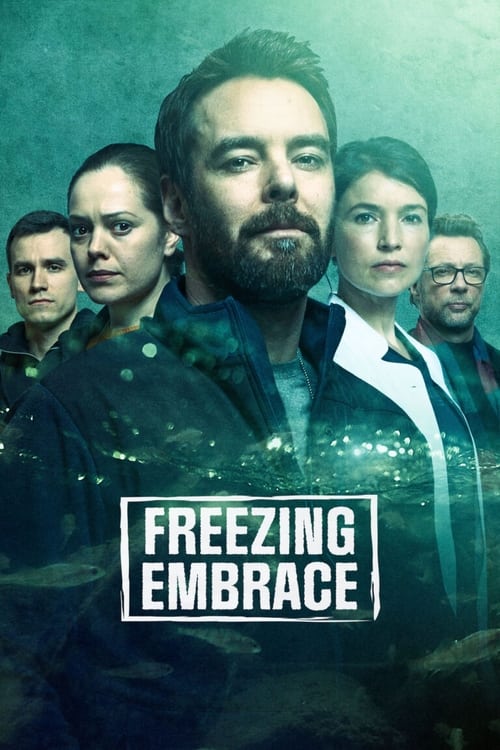
Ask Your Own Question
What is the plot?
The episode opens with a serene view of the Lakeside community, the sun rising over the water, casting a golden hue on the landscape. The tranquility is abruptly shattered when a local fisherman discovers a body floating in the lake. The camera zooms in on the lifeless figure, revealing it to be a well-known community member, stirring immediate panic among the townsfolk.
Cut to the police station, where Detective Sarah Collins and her partner, Officer Mark Thompson, are briefed on the situation. Sarah, visibly shaken but determined, expresses her commitment to uncovering the truth behind the death. Mark, trying to maintain a calm demeanor, suggests they start by interviewing the victim's family and friends. The tension in the room is palpable as they prepare for the investigation.
The scene shifts to the victim's home, where Sarah and Mark meet the victim's spouse, who is distraught and in disbelief. The spouse reveals that the victim had been acting strangely in the days leading up to their death, mentioning a mysterious figure that had been following them. This revelation piques Sarah's interest, and she takes note of the spouse's emotional state, sensing a mix of grief and fear.
Next, the detectives visit the local bar where the victim was last seen alive. The bar is filled with patrons, and the atmosphere is heavy with gossip. Sarah and Mark question the bartender, who recalls a heated argument between the victim and another local resident, Jake, just hours before the death. The bartender describes Jake as aggressive and unstable, raising suspicions about his involvement. Sarah decides they need to speak with Jake next.
The detectives find Jake at a rundown cabin on the outskirts of town. He is defensive and evasive during questioning, denying any involvement in the victim's death. However, his erratic behavior and conflicting stories raise red flags for Sarah. As they leave, Sarah expresses her gut feeling that Jake knows more than he is letting on, and Mark agrees, suggesting they keep a close watch on him.
Meanwhile, the investigation takes a turn when Sarah receives an anonymous tip about a possible motive behind the murder. The tipster claims that the victim was involved in a shady business deal that went wrong, implicating several other townspeople. This new lead sends Sarah and Mark on a deeper dive into the victim's financial records, revealing a web of deceit and betrayal that connects multiple residents.
As they sift through the evidence, Sarah's determination intensifies. She feels the weight of the community's expectations on her shoulders, knowing that the truth must come to light. Mark, sensing her growing obsession, tries to remind her to take care of herself, but Sarah brushes off his concerns, driven by her need for justice.
The episode culminates in a tense confrontation at a town hall meeting, where Sarah presents her findings to the community. The atmosphere is charged with anxiety as she reveals the victim's connections to various residents, including Jake. The crowd reacts with shock and anger, and accusations fly. In the chaos, Jake storms out, vowing to clear his name, while Sarah's resolve only strengthens.
The final scene shows Sarah alone at the lake, reflecting on the case. The water is still, but her mind is racing with possibilities. She knows that the investigation is far from over and that the truth is buried deeper than anyone realizes. The camera pulls back, leaving her silhouetted against the setting sun, a symbol of her relentless pursuit of justice.
What is the ending?
In the ending of "In Good Faith Part 1," tensions escalate as the investigation into the murder deepens. Detective Sarah and her team uncover a web of deceit that leads them to a shocking revelation about the victim's past. The episode concludes with a cliffhanger, as Sarah receives a threatening message that puts her and her loved ones in danger, leaving viewers anxious for the next installment.
As the episode nears its conclusion, the atmosphere in the Lakeside community grows increasingly tense. Detective Sarah, having pieced together various clues throughout the investigation, stands in the dimly lit precinct, surrounded by her team. The weight of the case hangs heavily on her shoulders, and her determination is palpable. She feels the pressure not only to solve the murder but also to protect her community from the underlying threats that have emerged.
In a pivotal scene, Sarah gathers her team to discuss the latest findings. The room is filled with a mix of hope and anxiety as they share their discoveries about the victim, a local philanthropist with a seemingly perfect life. As they delve deeper into the victim's connections, they uncover a series of betrayals and hidden relationships that complicate the case. Each revelation adds layers to the narrative, showcasing the complexity of human relationships and the darkness that can lurk beneath the surface.
Meanwhile, the emotional stakes rise for Sarah as she reflects on her own life. She is haunted by memories of her past, which intertwine with her current investigation. The audience sees her vulnerability as she grapples with the fear of losing those she loves, particularly her partner, who has been supportive throughout her career. This internal conflict adds depth to her character, illustrating her dedication to justice while also highlighting her personal struggles.
As the investigation progresses, Sarah receives a cryptic message that sends chills down her spine. The camera captures her reaction in close-up, revealing a mix of fear and resolve. The message hints at a looming threat, suggesting that the killer may be closer than she realizes. This moment serves as a turning point, propelling the narrative toward its climax and leaving viewers on the edge of their seats.
The episode concludes with Sarah standing alone in her office, the weight of the case pressing down on her. The screen fades to black as the ominous music swells, leaving the audience with a sense of foreboding. The fate of Sarah and her team hangs in the balance, setting the stage for the next episode and ensuring that the tension will carry over into the unfolding story.
In summary, the ending of "In Good Faith Part 1" leaves viewers with unresolved questions and heightened anticipation for the next chapter in the Lakeside Murders saga. Each character's journey is intricately woven into the fabric of the narrative, emphasizing the themes of trust, betrayal, and the quest for truth in a world filled with shadows.
Is there a post-credit scene?
In "In Good Faith Part 1," the first episode of Season 2 of Lakeside Murders, there is indeed a post-credit scene that adds an intriguing layer to the unfolding narrative.
As the credits roll, the screen fades to a dimly lit room, revealing a cluttered desk strewn with papers and photographs. The camera slowly pans across the surface, highlighting a series of images depicting various locations around Lakeside, each marked with red circles and notes scribbled in the margins. The atmosphere is tense, underscored by a low, suspenseful score that builds anticipation.
Suddenly, the focus shifts to a shadowy figure seated in a corner, their face obscured by the darkness. They are intently studying a particular photograph of a recent victim, their expression a mix of determination and frustration. The figure mutters to themselves, revealing a deep-seated obsession with the case, hinting at a personal connection to the events unfolding in the main storyline.
As the scene progresses, the figure reaches for a phone, dialing a number with a sense of urgency. The camera zooms in on their hand, trembling slightly, suggesting a mix of fear and resolve. Just before the call connects, the screen cuts to black, leaving viewers with a chilling sense of uncertainty and anticipation for what lies ahead in the season.
This post-credit scene effectively sets the stage for deeper conspiracies and personal stakes, teasing the audience with the promise of more twists and revelations in the episodes to come.
What role does the town's history play in the unfolding mystery?
The town's history is intricately woven into the plot, as past events are revealed to have a direct impact on the current murder case. The protagonist discovers that long-buried secrets from the town's past are resurfacing, complicating the investigation and affecting the characters' motivations.
What is the significance of the mysterious letter found by the main character?
The mysterious letter serves as a catalyst for the investigation, revealing hidden connections between the victim and several townspeople. It hints at a deeper conspiracy that the protagonist must unravel, driving the narrative forward.
How does the relationship between the detective and the local sheriff evolve in this episode?
In this episode, the relationship between the detective and the local sheriff is strained due to differing approaches to the investigation. The detective's relentless pursuit of the truth clashes with the sheriff's desire to maintain peace in the community, leading to tension and conflict.
Who are the key suspects introduced in this episode, and what are their motives?
Key suspects introduced include a local businessman with a shady past, a jealous ex-lover, and a reclusive artist who has a mysterious connection to the victim. Each suspect has their own motives, ranging from financial gain to personal vendettas, adding layers of complexity to the investigation.
What emotional struggles does the protagonist face while investigating the murder?
The protagonist grapples with feelings of guilt and responsibility, haunted by past failures in previous cases. As they delve deeper into the investigation, they also confront personal demons, including strained family relationships and the pressure of living up to their own expectations.
Is this family friendly?
"Lakeside Murders" Season 2, Episode 1, titled "In Good Faith Part 1," contains several elements that may not be suitable for children or sensitive viewers. Here are some potentially objectionable or upsetting aspects:
-
Murder Investigation: The central theme revolves around a murder case, which includes discussions of violence and death that may be distressing.
-
Graphic Imagery: There are scenes depicting crime scenes that may include blood or other unsettling visuals.
-
Emotional Turmoil: Characters experience intense emotional states, including grief, anger, and fear, which may be heavy for younger audiences.
-
Themes of Betrayal and Trust: The plot explores complex relationships and moral dilemmas, which may be difficult for children to fully understand.
-
Tense Situations: The episode features suspenseful moments that could be frightening or anxiety-inducing.
These elements contribute to a darker tone that may not be appropriate for all viewers, particularly younger children or those sensitive to such themes.



































